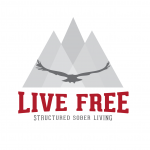If you or someone you know is considering entering a drug or alcohol rehab program, it may help to gain an understanding of what to expect from treatment. Drug rehab programs require significant effort, but can be remarkably rewarding and successful when combined with the right support systems and a commitment to sobriety.
How Rehab Can Help
Roughly 23 million people aged 12 and older require treatment for drug and alcohol problems in the United States. However, only 10% of people struggling with substance abuse receive treatment. It can be difficult to admit that you have a problem requiring professional help, but if drug or alcohol use is interfering with your daily life and causing negative effects, a rehab program may be able to give you the tools and support you need to get and stay sober.
Stages of Rehab
The stages of rehab can vary depending on several factors, such as the severity of the addiction and the type of rehab program chosen. However, most rehab programs will typically follow a similar structure.
People who enroll in a rehab program can expect to go through at least four stages of treatment: evaluation, detoxification, rehabilitation, and aftercare.
Evaluation
After being admitted to a rehab program, the first step is a professional evaluation. In order to create a treatment program that addresses your individual situation and needs, the medical staff and recovery counselors will need as much information as you can provide about the types of drugs you use, how often you use them, how long you have been using them, and how much you take. The medical staff will also need to review your personal health history and be aware of any allergies or health issues.
Detoxification
Treatment officially begins with detoxification, which is the stage during which all substances are cleared from the patient’s system. Attempting to detox from drugs or alcohol without medical supervision can be dangerous. The body will experience withdrawal symptoms, which can vary greatly depending on the types of substances used and the severity of the addiction. Withdrawal symptoms can include heart palpitations and seizures, which can be life-threatening in some cases. Your medical team can help lessen withdrawal symptoms with special medications, which should be taken only under a doctor’s supervision.
The length of time required for detoxification varies from person to person. Some drugs may require a month to be completely removed from the body, but most people begin to feel better after a couple of weeks. It’s important to understand that this is a normal part of the recovery process and is temporary.
Rehabilitation
Once the physical effects of withdrawal have subsided and the body is no longer dependent on substances, the rehabilitation stage of rehab can begin. Rehabilitation can occur in either an inpatient or outpatient setting, depending on the type of program in which you have enrolled.
The rehabilitation phase aims to help patients understand the root of their drug addiction and discover alternative coping strategies for situations that have triggered drug or alcohol use in the past. These triggers are often rooted in family issues or past trauma.
Depending on your individual needs identified during your evaluation, rehabilitation may involve several different forms of therapy or counseling. Most rehabilitation programs will include some form of individual counseling along with group therapy. One therapeutic approach commonly used is cognitive behavioral therapy, which helps patients identify and modify underlying beliefs that influence their behavior.
Group therapy can also be highly beneficial to patients in recovery. Group therapy allows patients to discuss their drug and alcohol problems in a supportive environment with others who have experienced the same challenges. This can help patients realize they are not alone and can help combat feelings of isolation and inadequacy, which are common among those who struggle with addiction.
Other forms of therapy may be available during this stage as well, such as physical activity, recreational therapy, and nutritional counseling.
Aftercare
Aftercare programs can help reduce the risk of relapse following completion of an inpatient or outpatient rehabilitation program. Aftercare programs are designed to help patients continue to work toward full recovery after they leave the treatment facility and return to their daily lives. Aftercare services may include continued individual or group counseling, temporary residence in a sober living facility, or enrollment in a 12-step program.


Recent Comments